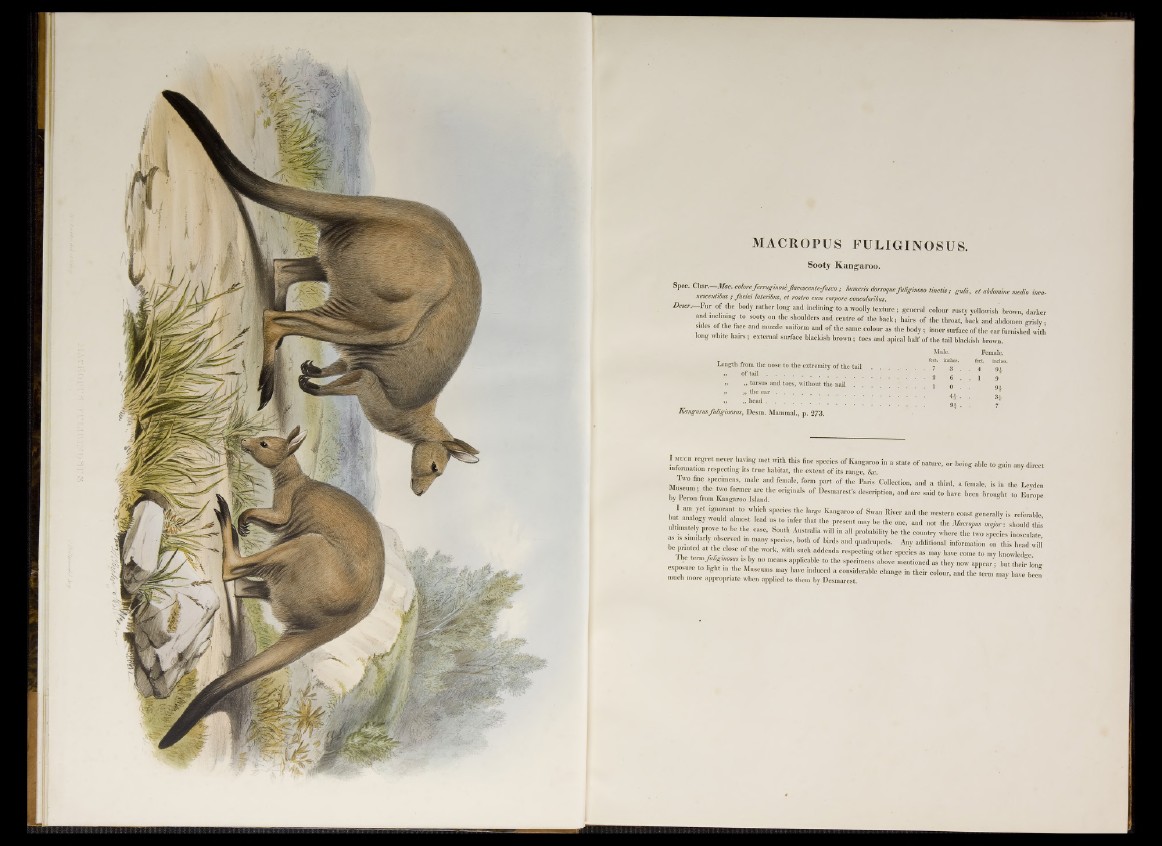
MACROPUS FULIGINOSUS.
Sooty Kangaroo.
Spec. Char. Mac. cohre ferrugmos^ meScente-fmco ; tumeris donoque JMginoto tincth ,■ # u li, et abdomine medio mca-
nescenUbus ; faciei latenbus, et rostro cum corpore concoloribus.
Deter.— Fur o f the body rather long and inclining to a woolly texture; general colour rusty yellowish brown darker
and mclming to sooty on the shoulders and centre o f the baek; hairs o f the throat, hack and abdomen grisly ;
si es o f the face and muzzle uniform and o f the same colour as the body; inner surface o f the ear furnished with
long white hairs; external surface blackish brown; toes and apical half o f the tail blackish brown.
Male. Female.
T , feet, inches.I lAnOth frATYl rhu noon_____________-1 /' . 1 , *1 feet, inches. Length from the nose to the extremity of the tail ...................... . . 7 3 . 4 o.
„ of t a i l ............................ .......................................................................... .....«. 6 . . 1 9T
» „ tarsus and toes, without the n a i l 1 o 90.
„ „ the e a r ...................... i »head j f
Kangurusfuliginosus, Desm. Mammal., p. 273.
I m u c h regret never having met with this fine species o f Kangaroo in a state o f nature, or being able to gain any direct
information respecting its true habitat, the extent o f its range, &c.
Two fine specimens, male and female, form part o f the Paris Collection, and a third, a female, is in the Leyden
Museum; the two former are the originals o f Desmarest’s description, and are said to have been brought to Europe
by Feron from Kangaroo Island. 8 *
I am yet ignorant to which species the large Kangaroo o f Swan River and the western coast generallv is referable
but analogy would almost lead us to infer that the present may be the one, and not the Maoropus maj^r, should this
u t,mutely prove to be the case, South Australia will in all probability he the country where the two species inoscula,
as IS similar y observed in many species, both o f birds and quadrupeds.’ Any additional information on this head wil
— ■ cl0S<! 0 f ‘hc ™ -k' ■ ■ addenda respecting other species as may have come to my knowledge
The term /u ^ iaum ,s by no means applicable to the specimens above mentioned as they now appear; but their long
exposure to light m the Museums may have induced a considerable change in their colour, and the L m may have b Z
much more appropriate when applied to them by Desmarest.